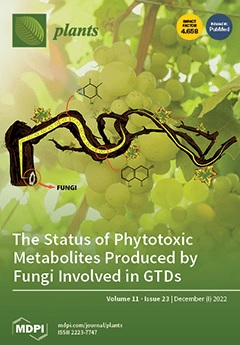Ver ítem
- xmlui.general.dspace_homeCentros Regionales y EEAsCentro Regional Entre RíosEEA ConcordiaArtículos científicosxmlui.ArtifactBrowser.ItemViewer.trail
- Inicio
- Centros Regionales y EEAs
- Centro Regional Entre Ríos
- EEA Concordia
- Artículos científicos
- Ver ítem
Transcriptome dynamics of rooting zone and leaves during in vitro adventitious root formation in eucalyptus nitens
Resumen
Wood properties and agronomic traits associated with fast growth and frost tolerance make Eucalyptus nitens a valuable forest alternative. However, the rapid age-related decline in the adventitious root (AR) formation (herein, meaning induction, initiation, and expression stages) limits its propagation. We analyzed transcriptomic profile variation in leaves and stem bases during AR induction of microcuttings to elucidate the molecular mechanisms involved
[ver mas...]
Wood properties and agronomic traits associated with fast growth and frost tolerance make Eucalyptus nitens a valuable forest alternative. However, the rapid age-related decline in the adventitious root (AR) formation (herein, meaning induction, initiation, and expression stages) limits its propagation. We analyzed transcriptomic profile variation in leaves and stem bases during AR induction of microcuttings to elucidate the molecular mechanisms involved in AR formation. In addition, we quantified expressions of candidate genes associated with recalcitrance. We delimited the ontogenic phases of root formation using histological techniques and Scarecrow and Short-Root expression quantification for RNA sequencing sample collection. We quantified the gene expressions associated with root meristem formation, auxin biosynthesis, perception, signaling, conjugation, and cytokinin signaling in shoots harvested from 2- to 36-month-old plants. After IBA treatment, 702 transcripts changed their expressions. Several were involved in hormone homeostasis and the signaling pathways that determine cell dedifferentiation, leading to root meristem formation. In part, the age-related decline in the rooting capacity is attributable to the increase in the ARR1 gene expression, which negatively affects auxin homeostasis. The analysis of the transcriptomic variation in the leaves and rooting zones provided profuse information: (1) To elucidate the auxin metabolism; (2) to understand the hormonal and signaling processes involved; (3) to collect data associated with their recalcitrance.
[Cerrar]

Autor
Ayala, Paula Gabriela;
Acevedo, Raúl Maximiliano;
Luna, Claudia Verónica;
Rivarola, Maximo Lisandro;
Acuña, Cintia Vanesa;
Marcucci Poltri, Susana Noemi;
González, Ana M.;
Sansberro, Pedro Alfonso;
Fuente
Plants 11 (23) : 3301 (Noviembre 2022)
Fecha
2022-11
Editorial
MDPI
ISSN
2223-7747
Formato
pdf
Tipo de documento
artículo
Palabras Claves
Derechos de acceso
Abierto
 Excepto donde se diga explicitamente, este item se publica bajo la siguiente descripción: Creative Commons Attribution-NonCommercial-ShareAlike 2.5 Unported (CC BY-NC-SA 2.5)
Excepto donde se diga explicitamente, este item se publica bajo la siguiente descripción: Creative Commons Attribution-NonCommercial-ShareAlike 2.5 Unported (CC BY-NC-SA 2.5)


